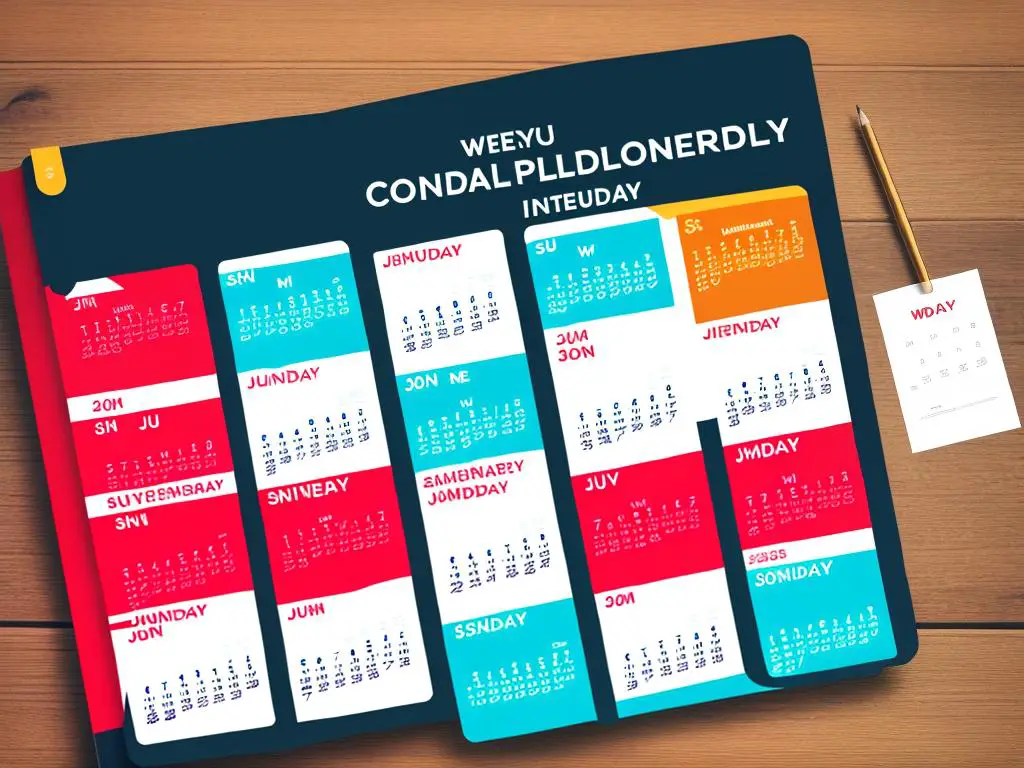What causes a blog to grow and flourish? This is a question many bloggers ponder and finding answers often involves an exploration into the different factors that accelerate blog growth. In our digital age, creating a successful blog involves more than just sharing unique content; it requires understanding various elements such as audience engagement, content quality, and most importantly, posting frequency. This knowledge serves as the foundation for our discussion about blog growth, a powerful tool in the world of interactive and dynamic online communication.
Understanding Blog Growth
Understanding Blog Growth: Dependence on Posting Frequency
In the realm of blog growth, the frequency of posting holds a significant role. Much like a television series or a newspaper, consistency and regular showtimes or releases are key to attracting and keeping an audience. The same principle applies to blogs. Here is how — and why.
Why Frequency Matters
Frequent posting can dramatically affect your blog’s growth. Each new post is a new opportunity for people to discover your blog. Search engines like Google are more likely to favor sites that offer regular, fresh content. A steady stream of posts helps your blog appear active, dynamic, and valuable to both human users and search bots.
Beyond that, regular posting is essential for audience engagement. It provides your readers with something to look forward to. When a blog posts frequently, readers will likely visit the blog regularly to read the new content. Consequently, this can increase your blog’s visibility and brand recall.
Balancing Between Quantity and Quality
While blog post frequency is essential, quality should never be compromised. Blogs that only prioritize frequency could produce low-quality posts and end up losing readers instead of gaining them. A constant stream of low-quality posts can deter existing subscribers, dilute your blog’s valuable content and negatively impact your blog’s reputation.
Therefore, it is vital to strike a balance between quantity and quality. Regular posting of high-quality and valuable content should be the goal. This way, your blog can effectively engage your audience and attract new readers, thereby contributing to blog growth.
Optimal Posting Frequency
There’s no one-size-fits-all answer to how often you should be posting. The optimal frequency depends on the nature of your blog, your target audience, and your resources. Posting daily is advantageous if you can maintain the quality of the content. However, bloggers who can’t afford to post daily can set a posting schedule. This might be new posts every other day, or perhaps weekly posts. The key element here is consistency; it’s better to make a sustainable plan and stick with it than to post erratically.
Measuring the Impact
One useful method to measure the impact of posting frequency on blog growth is through analyzing your site’s analytics. Tools like Google Analytics can provide insights into how often users visit your blog, their engagement rates, and more. Study these metrics before and after you adjust your posting frequency can give you an idea of whether it’s having the desired effect – that is, fostering sustained blog growth.
In assessing the driving elements of blog growth, post frequency emerges as a complex factor. It intertwines with audience expectations, search engine optimization, and the critical balance between the volume and quality of content. In the realm of blogging, it is often a slow and steady pace with exceptional content that outperforms others.

Photo by andrewtneel on Unsplash
Influence of Posting Frequency on Blog Growth
Decoding the Impact of Post Frequency on Blog Growth
The frequency at which you post on your blog is an essential element to its growth trajectory. Figuring out the optimal posting schedule often involves some trial and error, but some understanding of the landscape can significantly assist in making informed decisions. Various schools of thought exist on how frequently new content should be added to a blog. Ascertaining the ideal equilibrium is indispensable in achieving steady and sustainable growth.
Statistical Overview
Research shows that companies who blog more frequently receive significantly more traffic to their site, with a study by Hubspot demonstrating that organizations which publish 16 or more blogs per month received 3.5 times more traffic than those who published between zero and four. This statistic supports the notion of a direct relationship between quantity of blog posts and blog growth.
In a similar vein, the popular tech blog Buffer published stats showing that doubling their post frequency led to an increase in traffic of over 40%, and the site’s referral traffic from LinkedIn was nearly doubled too. Further confirming the role of frequency in blog growth.
Quality Versus Quantity
Despite such statistics, it’s worth mentioning the quality versus quantity debate. While posting often can boost blog growth and increase visibility, it’s imperative that the quality of the content doesn’t suffer as a result. Consistently high-quality posts that provide value to readers are far more likely to retain existing audiences and attract new ones than numerous low-quality posts.
Neil Patel, a leading expert in online marketing, maintains that the quality of posts can significantly outweigh quantity when it comes to blog growth and SEO rankings. His research shows that comprehensive, in-depth blog posts tend to rank higher in Google searches, indicating that quality is an essential factor for blog visibility and growth.
Balancing Act
So, what is the optimal frequency for blog posting? It appears to be a balancing act between posting regularly enough to keep driving traffic to your site and staying visible, while also ensuring that each post is of high enough quality to engage readers and keep them returning. Prioritizing one over the other may lead to the stagnation of audience growth or loss of existing readership.
Role of Audience and Niche
It’s also important to consider the nature of your audience and your blog’s niche market. Some audiences may require more frequent and up-to-date information, like those seeking news or technology updates. In contrast, other topics might not require as many regular updates but instead call for well-researched, in-depth posts.
In Conclusion
The correlation between blog growth and the frequency of posting isn’t straightforward – it is a multifaceted interaction that includes various elements. It’s true to say that frequent posts can drive more traffic and increase visibility. However, the quality and applicability of the content, as well as understanding the target audience and market, are just as crucial. Thus, finding a balance between these aspects might be the real secret to prosperous blog growth.

Strategies to Optimize Posting Frequency
Delving Deeper: The Significance of Regular Posting
Frequent posting is an essential determinant of blog growth. Continually updating your blog with unique and timely content helps cultivate a following. Audiences tend to become more loyal and engaged with blogs that consistently offer new material that is of relevance to them.
Knowing Your Audience’s Behavior
The first step in defining your posting frequency is to understand the behavior and preferences of your readers. You need to consider their reading habits, the platforms they use, and the times when they are most active.
Through audience analysis, you can identify the times when your readers are more likely to engage with your blog content, thus maximizing its exposure. For example, if you find that your audience generally reads blog posts during their lunch break, that would be an ideal time to publish new content.
Leveraging Analytics Tools
Analytics tools can provide you with insights into your reader’s behavior, such as their demographic details, the devices they use to access your blog, and even which posts are the most popular.
Google Analytics, for example, is a free tool that provides important data on the traffic to your blog and can help track how many people are visiting your blog, how long they stay, and what they are reading. By understanding this data, you can optimize your content and posting schedule to reach a maximum number of readers.
Creating a Content Calendar
A content calendar is a useful tool that allows you to plan your posting schedule ahead of time. You can plot out what to post and when, ensuring a consistent flow of content that aligns with your readers’ behavior.
With a content calendar, you can also allocate time for researching and creating a mixture of short and in-depth blog posts, matching the preferences of your readers.
Balancing Quantity with Quality
It can be tempting to post frequently to increase visibility, but it’s just as important to maintain a high standard of quality. Posting too often may let the quality of your content suffer, which in turn can disengage your readers.
To grow your blog, you need to strike a balance between the quantity and quality of your posts. This can be achieved by deciding on a sustainable posting schedule, which ensures consistent, high-quality output, while keeping your audience engaged and satisfied. This might mean posting once daily, several times a week, or even just once a week, depending upon your resources and audience preferences.
In conclusion, optimizing posting frequency is an essential strategy for blog growth. With the right understanding of your audience’s behavior, use of analytics tools, creation of a content calendar, and a balanced approach to quantity and quality, you can effectively enhance your blog’s growth and reach.

The organic growth of a blog often hinges on the delicate balance of producing quality content and sharing it with the right frequency. Striking this balance can seem challenging but it becomes feasible when equipped with insights about your audience’s behaviors, proficiency in using analytics tools, and a well-structured content calendar. Ultimately, the impact of posting frequency on blog growth is palpable. It’s time we embrace and explore this dynamic further to unlock the potential of our blogs and create a lasting digital footprint in the online world.

